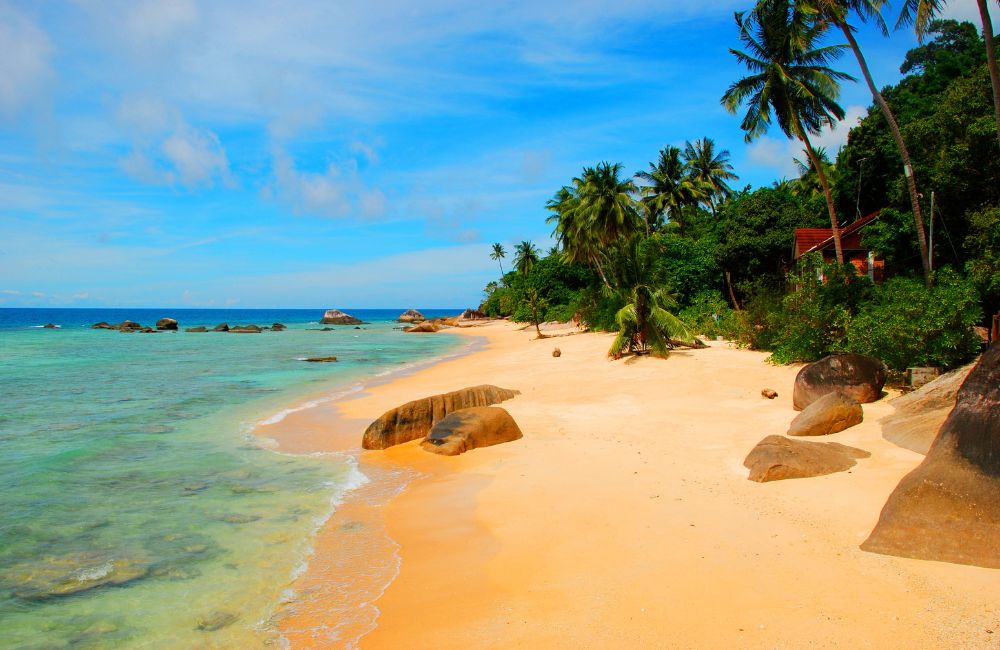
Hospitality Experience
Feasibility Study and Masterplanning for Ultra Luxury Resorts
A feasibility study and masterplanning for an ultra-luxury resort are comprehensive processes designed to evaluate the viability of the project while ensuring that the resort is strategically positioned to deliver an exceptional guest experience. The study addresses market demand, financial projections, site analysis, and operational considerations, while the masterplanning process outlines the physical design, spatial organization, and amenities to align with the resort's luxury positioning. Mengalum Island is envisioned to be a zero-carbon island resort.
Project Scope
A feasibility study and masterplanning for an ultra-luxury resort are comprehensive processes designed to evaluate the viability of the project while ensuring that the resort is strategically positioned to deliver an exceptional guest experience. The study addresses market demand, financial projections, site analysis, and operational considerations, while the masterplanning process outlines the physical design, spatial organization, and amenities to align with the resort’s luxury positioning.
The feasibility study begins with a detailed market analysis that examines trends in luxury travel, identifying the target demographic, which typically includes high-net-worth individuals, celebrities, and international travelers seeking exclusive experiences. Key factors such as the growth of the luxury travel market, trends in eco-tourism, and demand for private, immersive stays are considered to determine the potential market for the resort. Understanding the preferences of these affluent travelers—such as desire for privacy, bespoke services, and world-class amenities—is essential in tailoring the resort’s offerings. The study also evaluates competitive resorts within the region or destination, assessing their pricing strategies, service offerings, and occupancy rates to ensure that the new resort can offer differentiated experiences that appeal to its target market.
Site selection and analysis are critical components of the feasibility study. The resort’s location should be unique and desirable, offering access to natural beauty, exclusive experiences, and seclusion while remaining accessible to high-end travelers. Factors such as views, proximity to cultural or natural attractions, accessibility via private transportation, and environmental conditions are assessed. In addition, considerations around zoning, regulations, and any potential environmental impacts are evaluated to ensure smooth development and compliance with local laws.
Financial projections play a central role in the feasibility study. A detailed financial model is developed, taking into account the initial investment, development costs, ongoing operational expenses, and projected revenue streams. This includes income from room rates, exclusive amenities, fine dining, spa treatments, recreational activities, and other luxury services. Sensitivity analysis is conducted to determine how market fluctuations, such as changes in demand or economic conditions, could affect profitability. Long-term financial sustainability is a key focus, with a clear plan for managing costs, optimizing revenues, and achieving a desirable return on investment.
The masterplanning process follows the feasibility study and outlines the design and layout of the resort to ensure that it meets the high expectations of its clientele. The planning process starts with an evaluation of the resort’s concept and brand identity to ensure the design reflects its luxury positioning. The resort’s design should integrate the surrounding environment, taking advantage of natural features like beaches, forests, or mountains, while ensuring that buildings and infrastructure are unobtrusive and sustainable. The layout should include a variety of luxury accommodations, such as private villas, overwater bungalows, and exclusive suites, all designed with the finest materials and cutting-edge technology. A variety of world-class amenities, including fine dining restaurants, a luxurious spa, wellness centers, infinity pools, and event spaces, should be strategically placed to enhance the guest experience and provide a sense of exclusivity and privacy.
The spatial organization of the resort is crucial to maintaining a seamless flow and maximizing guest comfort. The design should ensure that guests can easily access all amenities while maintaining a sense of privacy and tranquility. Landscaping plays a significant role in the resort’s overall aesthetic, with lush gardens, serene water features, and scenic walking paths that guide guests through the resort. Additionally, the masterplan should take into account staff and service areas to ensure that operations are efficient, with minimal impact on the guest experience.
Sustainability is an increasingly important consideration for luxury resorts, and the masterplanning should incorporate eco-friendly practices, such as energy-efficient building designs, renewable energy sources, water conservation systems, and waste management initiatives. These practices not only align with the growing demand for responsible travel but also contribute to long-term operational cost savings.
The final step involves creating a detailed timeline and roadmap for the development, including construction phases, permitting processes, and pre-opening preparations. This ensures that the resort is built according to plan, stays within budget, and opens on schedule.
By combining a thorough feasibility study with a thoughtful and innovative masterplan, the ultra-luxury resort can be positioned for success, providing an exceptional guest experience while delivering sustainable profitability. This approach ensures that the resort meets the high standards expected by its target audience and establishes a lasting brand presence in the competitive luxury hospitality market.
Project Location
Mengalum Island, Malaysia
